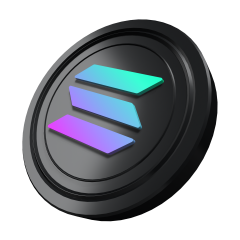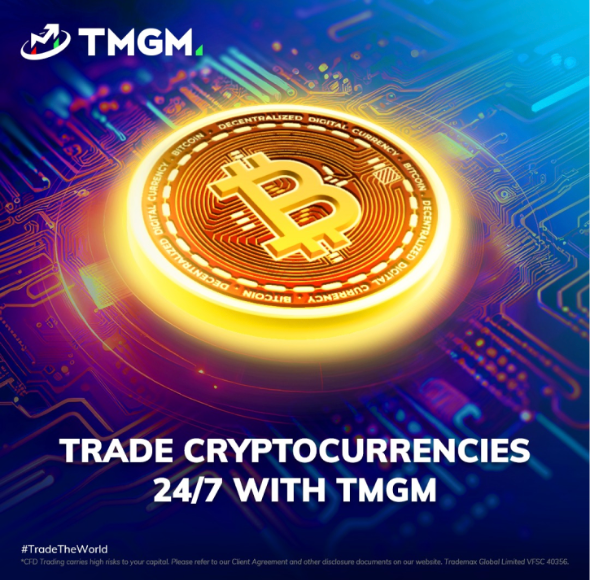

What Types of Cryptocurrencies Are Available for Trading?
The decentralised nature of crypto transactions, inherent security, and rapid processing speeds of cryptocurrencies like Bitcoin have led many to believe that cryptos could eventually supplant traditional fiat currencies. While it remains uncertain whether cryptocurrencies and the underlying blockchain technology will fully replace existing financial infrastructures, their influence on the financial sector has already generated significant interest, positioning tokens such as Bitcoin and Ethereum as popular tradable instruments. Some investors choose to hold the underlying digital assets to benefit from price appreciation. However, the nascent stage of cryptocurrencies results in substantial price volatility. Consequently, many traders prefer to speculate on cryptocurrencies through Contracts for Difference (CFDs). At this stage, you might have several questions about crypto CFD trading, the suitability of crypto for CFD trading, and how to trade crypto CFDs in Australia or your respective jurisdiction. Let us clarify how you can engage with one of the most dynamic fintech innovations of recent decades via CFDs.
Beyond Bitcoin: The Cryptocurrency Ecosystem
Bitcoin has been in existence since 2009. It is the largest cryptocurrency globally, boasting a market capitalization exceeding $1.2 trillion, and it garners the most mainstream media coverage. This positions it as the most actively traded cryptocurrency.
However, Bitcoin is not the sole token in the market. Ethereum is recognized as a second-generation cryptocurrency. It adopted certain principles from Bitcoin but introduced innovative features such as smart contracts. Today, numerous tokens have built upon Bitcoin’s foundation by integrating new functionalities.
In CFD crypto trading, the term ‘token’ serves as a broad descriptor for all cryptocurrencies other than Bitcoin, commonly referred to as altcoins.
Examples of Tradable Cryptocurrencies on TMGM
Cryptocurrencies can be classified based on their utility. All cryptocurrencies facilitate the exchange of value via decentralized blockchain networks. However, classification depends on the nature of the value exchanged and the mechanism of exchange.’
The primary categories include:
Payment Coins
These coins are utilized to transfer tokens with monetary value. Bitcoin was designed as a digital currency enabling payments through a decentralized peer-to-peer network, eliminating the need for a central payment processor.’
Smart Contract Platforms
Ethereum pioneered the smart contract blockchain. These blockchains operate on two layers: the base blockchain layer where tokens are exchanged, and a secondary layer enabling developers to create decentralized applications (dApps). These dApps are powered by smart contracts that execute predefined actions based on programmed rules, facilitated by the underlying blockchain layer.
Utility Tokens
These tokens emerged from the smart contract revolution and are essential for processing transactions within decentralized applications. For instance, on the Ethereum blockchain, the native coin is ETH.
Various decentralized applications operate atop the main blockchain (the secondary layer), each with its own tokens used for exchanging data, governance rights, gaming assets, and more.
Stablecoins
Stablecoins primarily serve as stores of value. Given the volatility of the cryptocurrency market, token prices can fluctuate significantly. Stablecoins mitigate this by pegging their value to fiat currencies such as the USD, providing price stability. For example, USDT (Tether) is pegged to the USD, meaning 1 USDT equals $1.
Based on these categories, some of the most popular crypto CFD trading tokens to consider include:
Payment Coins: Bitcoin, Litecoin, Ripple
Smart Contract Platforms: Ethereum, Cardano, EOS
Utility Tokens: BNB (Binance), Chainlink (oracle network), Uniswap (Decentralized Exchange)
Stablecoins: USDT (Tether), USD Coin, Dai
How to Trade Cryptocurrencies on MT5
At TMGM, our CFD trading platform provides access to cryptocurrency-based Contracts for Difference (CFDs). This differs from crypto exchanges where you purchase and sell tokens and hold ownership of the underlying asset.
Crypto CFD trading is a form of price speculation. Essentially, you aim to predict whether a token’s price will rise or fall. CFDs are financial derivatives that enable this without requiring ownership of the underlying asset.
This means you can trade cryptocurrency CFDs without needing a digital wallet or exchange account to store tokens. You are trading based solely on the asset’s price movements, making it a trading-focused approach to Bitcoin and other cryptocurrencies.
CFD vs. Crypto Investing
Here is a brief comparison of crypto CFD trading versus direct cryptocurrency investing:
Our MetaTrader 5 platform offers access to a broad selection of cryptocurrencies paired with fiat currencies, functioning similarly to forex currency pairs. For example, BTC/USD represents trading Bitcoin’s price against the US dollar.’
You can take a long position on BTC/USD if you anticipate the price will rise, or a short position if you expect it to fall.
At TMGM, you will have access to a wide range of crypto trading pairs:
Each cryptocurrency possesses unique characteristics and distinct potential. However, as with all tradable assets, some offer greater potential than others. From the list above, five cryptocurrencies to consider initially are:
Bitcoin (BTC): the original cryptocurrency that introduced blockchain-based transactions in 2009. Since then, Bitcoin has become the most valuable cryptocurrency worldwide, with a market capitalization exceeding $1 trillion. As of July 2024, Bitcoin’s all-time high price reached $73,000.
Ethereum (ETH): as the second cryptocurrency after Bitcoin, Ethereum introduced a novel approach to transaction validation by implementing Proof of Stake (PoS), where validators are randomly selected based on their stake, replacing the energy-intensive Proof of Work (PoW) mining process. Ethereum’s blockchain is layered, with one layer dedicated to running decentralized applications (dApps). The launch of Ethereum 2.0 enhanced scalability to meet growing demand. In 2024, Ethereum’s market cap surpassed $277 billion, with individual coins valued over $2,000.
Solana (SOL): Regarded by crypto enthusiasts as a next-generation blockchain, Solana builds upon Ethereum’s foundation by offering faster transaction processing and lower fees. This makes it highly attractive for developers of decentralized applications. While Ethereum 2.0 is expected to remain the leading dApp platform, Solana’s market cap exceeded $55 billion in 2024, reflecting significant market interest.
Litecoin (LTC): Inspired by Bitcoin and launched in 2011, Litecoin is often considered the silver to Bitcoin’s gold. It offers faster transaction confirmation times and lower fees compared to Bitcoin. As of July 2024, Litecoin’s market capitalization was approximately $4.4 billion, with tokens priced around $58 each.
Ripple (XRP): The XRP token, commonly referred to as Ripple after its blockchain network, had a market capitalization of $29 billion in 2024, with token prices below $1. Ripple is praised for its rapid transaction speeds and has been adopted by financial institutions exploring the future of cross-border payments.
Why choose TMGM as your crypto CFD broker? Our crypto CFD trading platform not only offers access to a variety of popular tokens but also includes advanced tools and features.
Trade on a crypto CFD platform regulated by ASIC and VFSC
Benefit from leverage up to 1:200
Enjoy tight spreads to minimize trading costs
Experience fast execution to secure the best available prices
Access 24/7 trading
Free use of MetaTrader 5
Receive research and crypto market updates – always conduct thorough research before opening trades
The Ever-Evolving Cryptoverse
Blockchain technology is continuously advancing, leading to ongoing innovations, new features, and the launch of additional cryptocurrencies. This dynamic environment makes CFD crypto trading vibrant and engaging.
Given the rapid pace of change in the crypto space, staying informed and adaptable is essential to maintain a competitive edge. This involves monitoring the latest crypto news, utilizing trading news feeds, following social media trends, and accessing expert trading analysis.
The market offers numerous opportunities, but only if you remain vigilant and identify them before conditions shift. Therefore, comprehensive information is crucial before engaging in crypto CFD trading.’
Start Your Crypto Discovery Journey
Crypto CFDs’ volatility presents both opportunities and risks. This volatility underscores the importance of understanding our risk warning.
After opening your TMGM account and making your initial deposit, conduct market research and utilize the resources TMGM provides before placing your first trade.
Once confident, you can explore the market further, engage in crypto CFD trading, and identify potentially profitable opportunities.
Trade Smarter Today






Account
Account
Instantly











